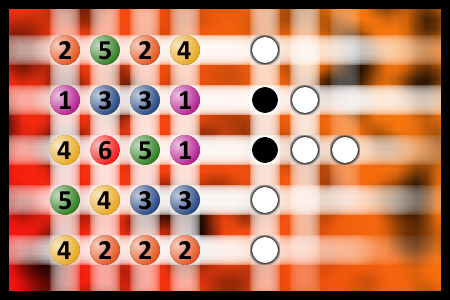Which is a winning combination of digits?
The computer chose a secret code (sequence of 4 digits from 1 to 6). Your goal is to find that code. Black circles indicate the number of hits on the right spot. White circles indicate the number of hits on the wrong spot.Correct answers: 58
The first user who solved this task is James Lillard.
#brainteasers #mastermind

Mad men are given a test to ch...
Mad men are given a test to check their mental state. The instructor draws a door on the wall and orders them to go out.
They start rushing to the door but one remains sitting. The instructor goes to him and asks; “why didn’t you join the others?” He replies, "let them fight they forgot I have the keys"
They start rushing to the door but one remains sitting. The instructor goes to him and asks; “why didn’t you join the others?” He replies, "let them fight they forgot I have the keys"

